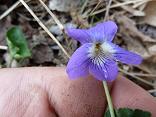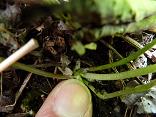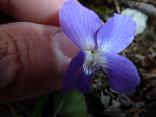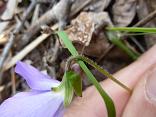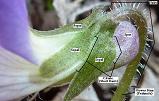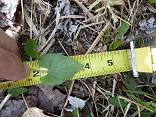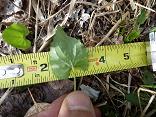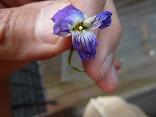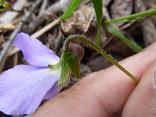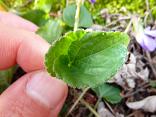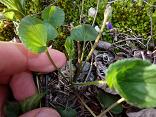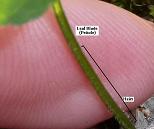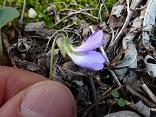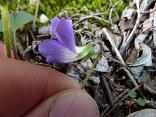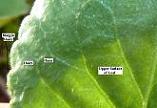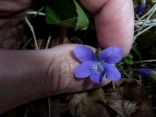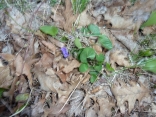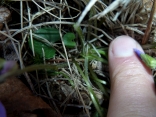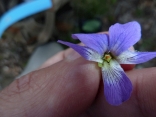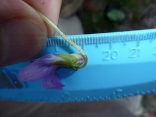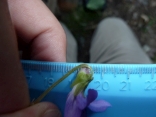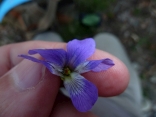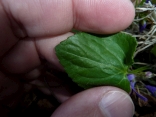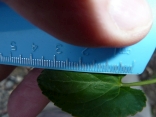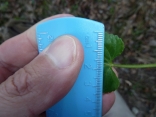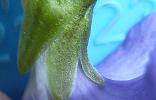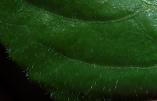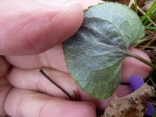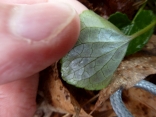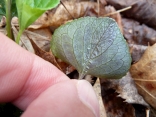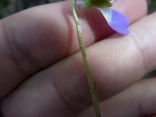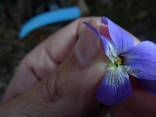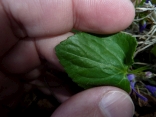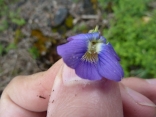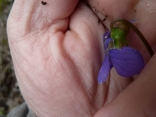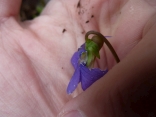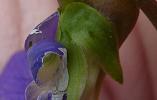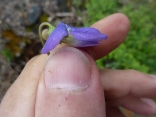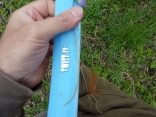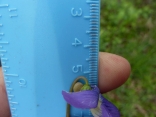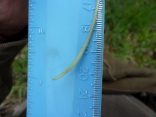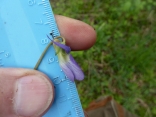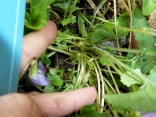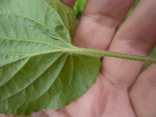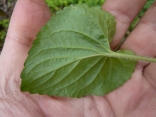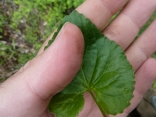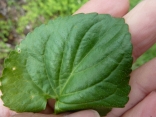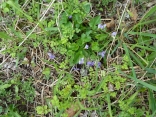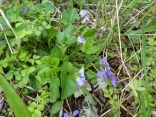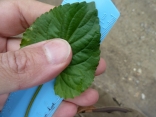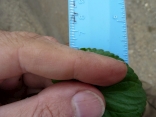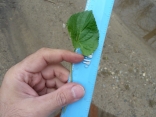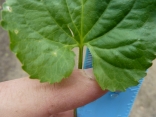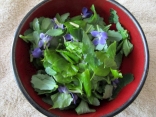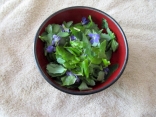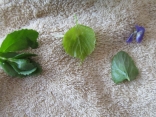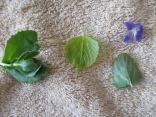This case was particularly difficult because many botanists and guides no longer recognize Northern Woodland Violet (Viola sororia) as a separate species, but now categorize it as part of Viola sororia. Unfortunately, the written descriptions of Viola sororia sometimes conflict with that of Viola sororia.
The second row of pictures show that the plant has no above-ground stem -- leaf stems and flower stems come right from the level of the ground. This eliminated Viola adunca and Viola labradorica as possibilities. The second picture in the row shows there are hairs on the lateral (side) petals of the flower. This eliminated Viola selkirkii as a possibility. In addition, you can see that the little hairs are not dialated (swollen) at the apex (tip). This eliminated Viola cucullata and Viola x bissellii as possibilities.
The third row of pictures show that the sepals (the petals that lie under the flower and are usually green) are ciliate (have short hairs). There are other ways to differentiate between violets, but I think this is the most efficient process. This eliminated Viola novae-angliae and Viola nephrophylla as possibilities.
The fourth row of pictures shows that the typical leaf is as long or longer than it is wide. Therefore, I was able to eliminate Viola sagittata var. ovata as a possibility. According to this Key, the only option left was Viola sororia.
However, I used the USDA Plant Database search to perform an Advanced Search to see what Violets were found in New Hampshire and then proceeded to write down which were purple or blue violets and which of those were not in the New Brunswick Key I used. The ones not in the Key were: Viola affinis, Viola rostrata and Viola sororia. Viola affinis has a hairless or nearly hairless flower stem. As you can see from pictures below, this flower had a very hairy flower stem. Viola rostrata has a huge spur (spike) rising up high from the back of the flower (as can be seen from pictures online). This flower had no huge spike.
This left either the original Key selection, Viola sororia or Viola sororia. Several descriptions I ready for Viola sororia said that the spur flower petal (bottom middle petal) had no hairs. But as can be seen from the pictures on the fifth row, the bottom middle flower petal (spur petal) has hairs. Even though Viola sororia is often categorized under Viola sororia, it has a spur petal with hairs.
Viola sororia also fits other descriptions and images that I have seen including a very hairy stem, some hairs on the leaves, hairs on the leaf blades and growing in moist open woodlands. Since Viola sororia is categorized as Viola sororia by most botanists, I decided to do so as well.
I ate several leaves. They were a touch bitter and it is probably best to not eat a violet salad without any other ingredients, but they were not bad.
